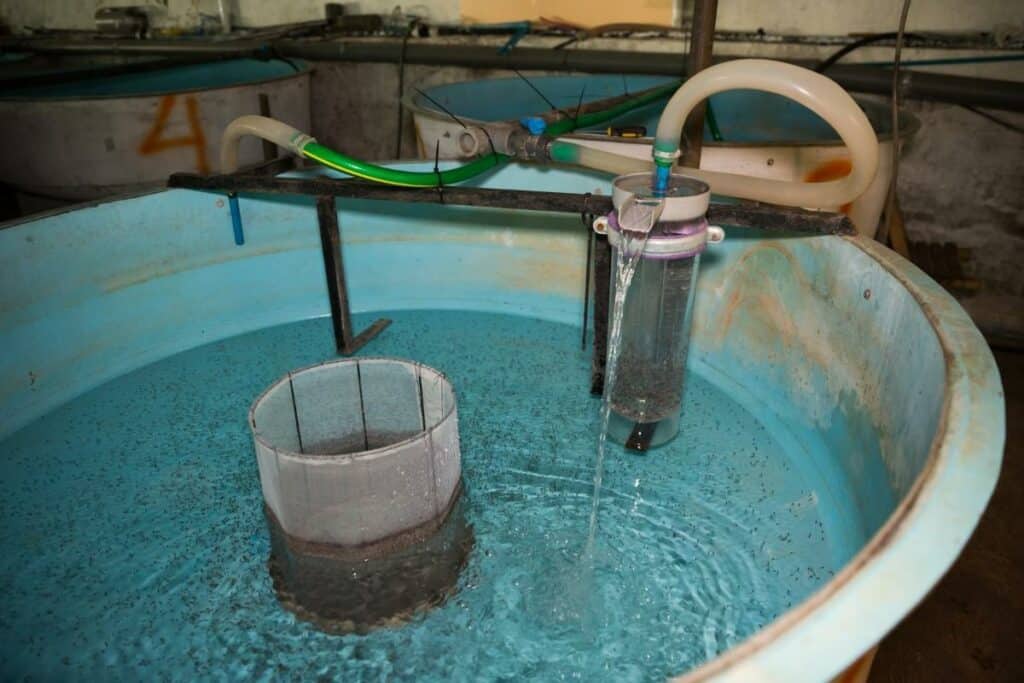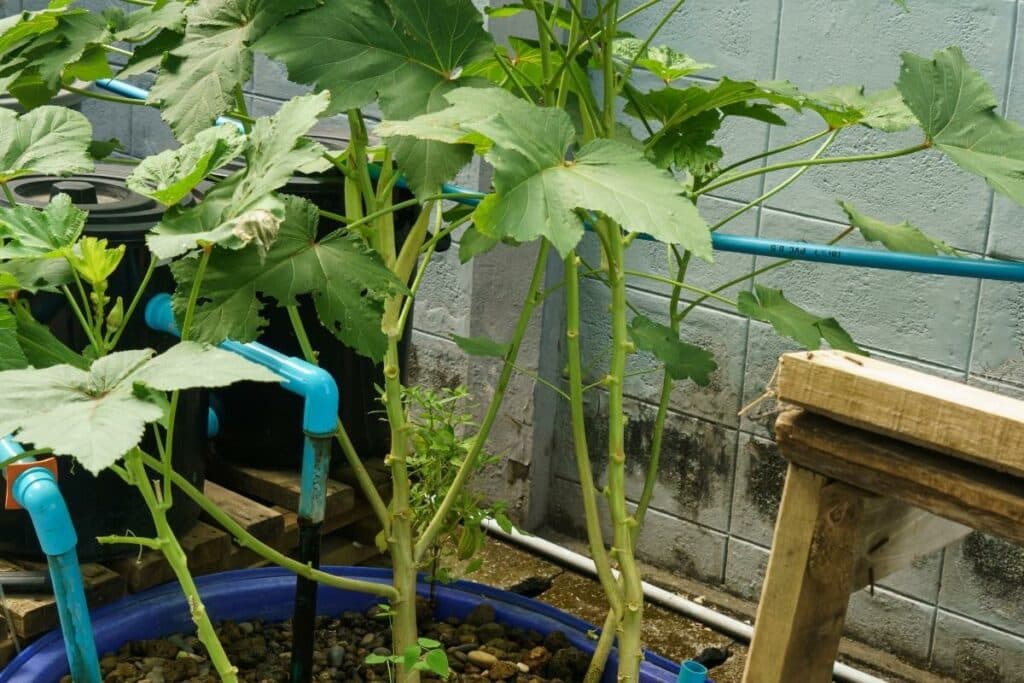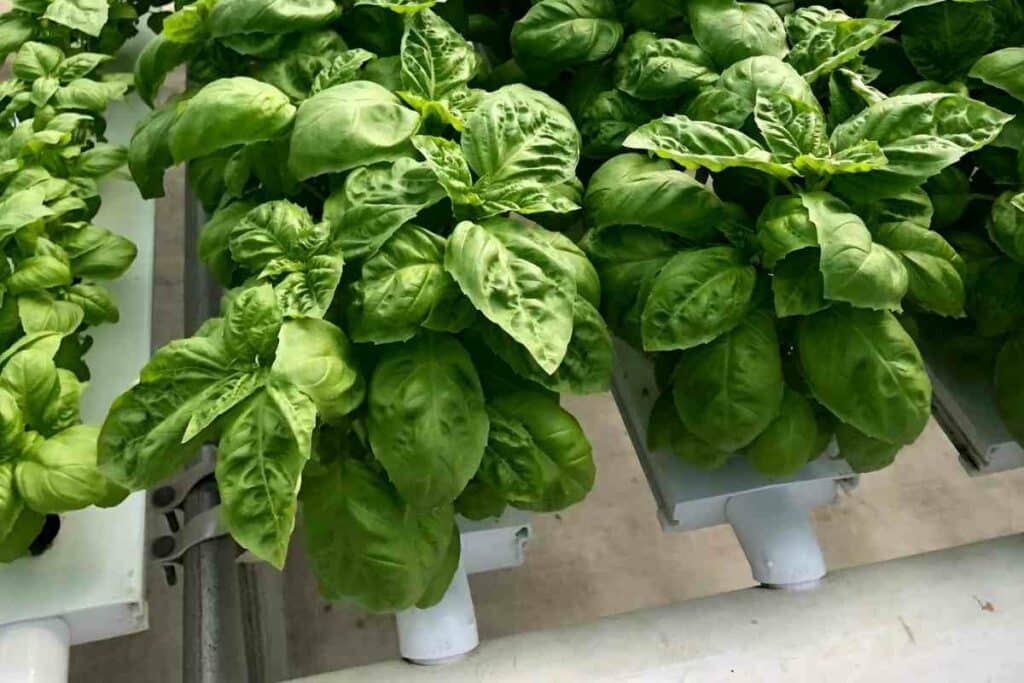Aquaponics is a lot like hydroponics in the way that the system is designed and how it functions.
Both systems use water as the primary way to deliver nutrients and do not require soil to grow.
With hydroponics, frequent water changes are necessary, which leads a lot of gardeners to ask the question: Do I need to change the water in aquaponics?
The differences between hydroponics and aquaponics are that fish are used as a nutrient source in aquaponics, and the water should be monitored and topped up. This will prevent the build-up of harmful bacteria which could kill your fish. If your system is correctly set up there should be no need for water changes unless you have over stocked with fish.
You will lose water due to evaporation, so it will need to be topped up from time to time, which will reduce harmful bacteria.
However, a well-designed system should be self-cleaning and need very little in the way of water changes.
How Does Aquaponics Work?
Aquaponics is set up to simulate natural waterways and is an effective way to grow crops in a small area.
These systems are highly sustainable.

In an aquaponic system, the primary input is fish food. The food is eaten by the fish, and they produce waste.
Over half of the waste produced by these fish is ammonia, secreted in the urine and through their gills.
The rest of the waste goes through a process known as mineralization.
In this process, the heterotrophic bacteria consume the waste, uneaten food, and decaying plant matter, creating ammonia and other compounds.
If the ammonia levels rise above a certain level, it becomes toxic to fish and plants.
This is where nitrifying bacteria, which are found in soil, air, and water, come in. This bacterium converts the ammonia into nitrites first and then nitrates, which are consumed by the plants.
Both heterotrophic bacteria and nitrifying bacteria cling to the walls of the tank, on the growing media, on organic matter, and under rafts in your system.
These beneficial bacteria are natural and present when there is ammonia and nitrites present.
There are three components to an aquaponic system that must be kept alive and healthy:
- plants
- fish
- beneficial bacteria
These three depend on each other to survive and create a circulating system where all needs are met.
The Process: Bacteria consume the fish waste, which keeps the water clean for the fish and also provides the plants with the nutrients they need to thrive. The plants use the nutrients and grow, which helps filter the water to keep it clean for the fish.
Should You Change Water in An Aquaponics System?

As we already mentioned, water shouldn’t need to be changed in an efficient aquaponics system since it is self-contained.
Plus, when you first set up your system, you should allow them to cycle to produce the right environment.
However, if you notice that you have an algae problem, you should definitely change the water out. Algae is a pest and can result in a variety of problems.
Two of the areas that can be affected are:
- Nutrients for plants
- System’s pH
However, before you even get started, to avoid having to change the water, let’s look at some ways that you can keep algae from accumulating in your system.
Shading
This is the simplest and quickest way to decrease the algae that are in your system.
In order for green algae to grow and reproduce, it needs light. Therefore, you can shade your tanks or cover them with dark-colored plastic or a tarp.
Many growers will paint a sump tank and transparent plastic black and then put white on top. This will reflect the sunlight, keeping the water from heating up.
It Works: If you have algae issues on your media beds, you can shade by adding more gravel/rock to keep the light from reaching moist areas.
Filtration
Mechanical filtration can have an impact on getting rid of algae.
Filtration equipment can get expensive, but it is easy to build. Simply use filters, screens, and centrifugal settlement equipment to remove the algae.
A grow bed acts as a mechanical filter and strains the algae from the water.
Alternatives
Some growers use humic acid to prevent algae growth.
In deeper tanks, adding this to the water will cause it to darken, which keeps algae from growing since they need light to grow and reproduce.
Additionally, adding humic acid to your water chelates the plant nutrients, so it benefits your plants as well.
Why Water Doesn’t Need to Be Changed
Besides making sure the pipes and pumps in your system are working properly and clean, there’s not much more you need to do with the water in your aquaponics system besides checking the pH.

This is because the aquaponics system is an eco-system, not just a system.
There are three zones in your aquaponics system:
- Surface
- Root
- Mineralization
Zone 1: Surface
This is the top 2” of the surface, and it serves 2 functions:
- It keeps a lot of the moisture from evaporating because it creates a dry zone.
- Dry pea gravel in this area will keep your crops from getting collar rot and decreases the chances of powdery mildew and algae growth.
Zone 2: Root
This is where the magic happens.
The root zone is 6” to 8” deep. Once the bed is flooded and drains, the oxygen delivery to the roots of your plants is optimized. The activity comes from beneficial bacteria, microbes, and worms.
The flood cycle is what distributes the waste particles across the grow bed. The worms break down solid matter and release minerals into worm tea.
Then, when the beds are flooded again, it distributes the worm tea to the roots of the crops.
Zone 3: Mineralization
The lowest 2” to 3” is a slurry of worm castings and fish waste solids, reduced to around 40% volume from the first entrance to the system.
During the flood and drain cycle, this zone will be freshened up by oxygen-rich water.
Conclusion
The short answer is no; you should never need to change the water in your aquaponics system.
However, though the system is self-contained, you still will need to provide some level of maintenance to ensure that it functions properly.
Even when you have filters and everything else needed in place, you can end up with blocked pumps or pipes.





